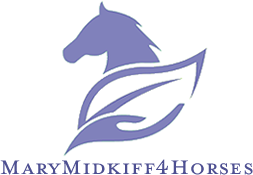No matter how hard we try to emulate successful riders and others who make it look easy, it is up to each of us to be aware of our own body’s ability to bend, flex, expand, differentiate, isolate and control our parts. We want to be helpful and not a hinderance to the horses we ride but we don’t know how to ride any other way except for how we’ve been taught, copying others or riding for survival in difficult moments.
You may be familiar with this issue in other areas of life where you do things a certain way until you learn, see, or feel something that works better for you. Many people in school find it difficult to learn with only one method. When many options of learning are available we can pick and choose what works best to achieve the outcome we and the educational systems seek.
It’s the same with riding, unless you’ve been shown another way you will always repeat the same techniques and patterns. This was the case in my life when I was in my late 30s and going through difficult hormonal times. My left leg just quit working for me in the saddle, and I had to have right shoulder surgery from wear and tear dealing with tough horses. The thing I loved most in life was the one thing I was struggling with and causing me pain and stress. But I had no options other than carry on.
Then I met Peggy Cummings. I had heard about her methods with Centered Riding and wanted to include her in my Women & Horses(TM) workshops. Peggy wanted to check me out before she got involved with my program. She met with me and watched me ride. She could see how I was struggling, working hard to manage the horse and my position. We started from scratch like i had never ridden before. This was a revelation to me as I had come from a very traditional English riding background.
She balanced my saddle first using shims to help establish a balanced seat. Then we began as I’m showing you here. It has been worth every moment I have spent and learned from Peggy since meeting her in the early 1990s. Her methods changed my body awareness, my perspective on riding and living, my understanding of the female body in alignment and balance and offered many alternative options in health for humans and horses. Peggy’s program is called Connected Riding. She contributed a chapter in my first book Fitness, Performance and the Female Equestrian. Please visit her on www.connectedriding.com She is visiting the UK in June for clinics. I will be announcing her dates when they are set.
In the meantime, here are a few excerpts from my book Fitness, Performance and the Female Equestrian to help you get started.

Since Part 1 where I discussed Finding Your Hip Joint I hope you have been exploring this within your own time to locate exactly where you bend; your major hinge! We now move to finding the same joint and additional hinges in the saddle.
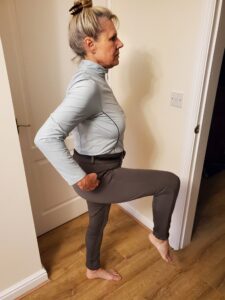
Here is a diagram of female alignment point locations. Note how the center arrow starts at the ear, to shoulder, to pelvis and the hip joint and the leg position.
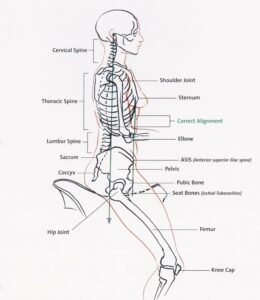
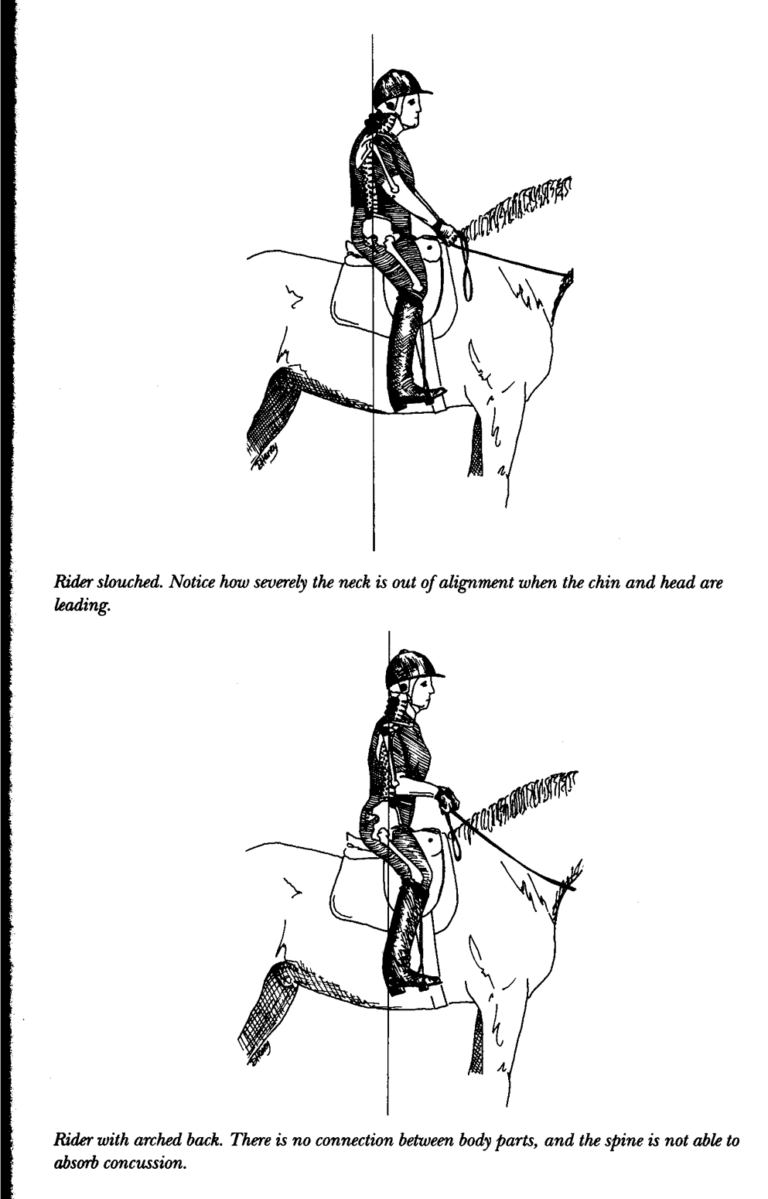
Which is your tendency? Do you arch your back in an attempt to “sit up”? Or do you drop your lower back and seat trying to “deepen your seat” and end up slumping? Or do you experience a combination of these “ways of compensating”? These are very typical compensations for many girls and women. You’re far from alone!!
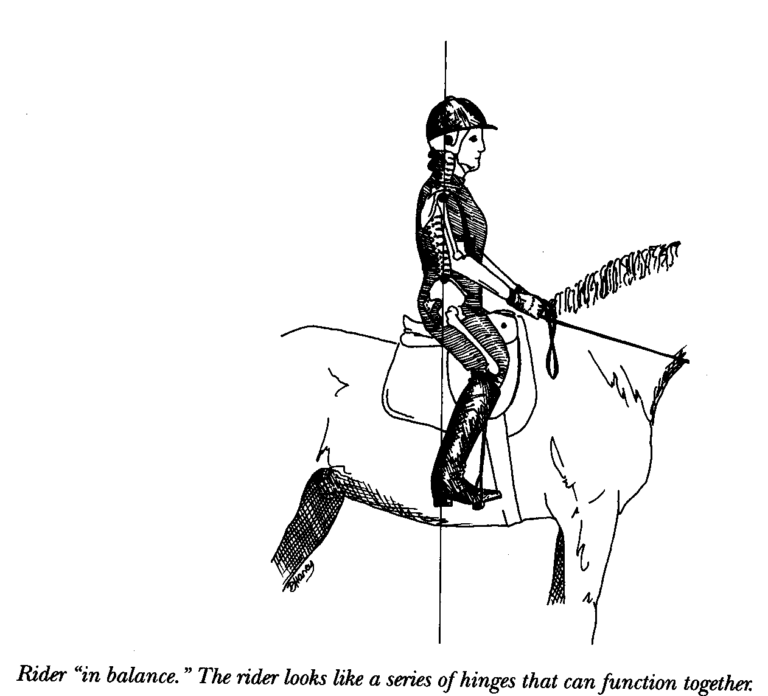
If you get a chance have someone video you and ride with arena mirrors when possible to evaluate yourself. Imagine alignment is like 12:00 on the clock dial. Are you slightly before 12:00 behind the motion of the horse; or are you slightly after 12:00 ahead of the horse’s motion? In the 3 photos below you can see my back alignment in the slumped, arched and aligned positions.
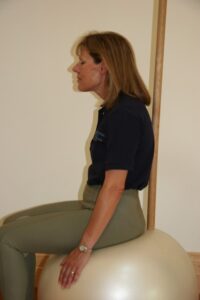

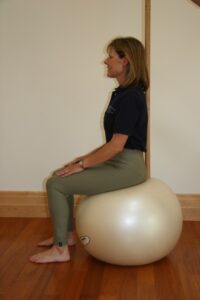
Once you are aware of what your body is doing in a chair, standing, sitting on a ball, you will be better able to feel it in the saddle.
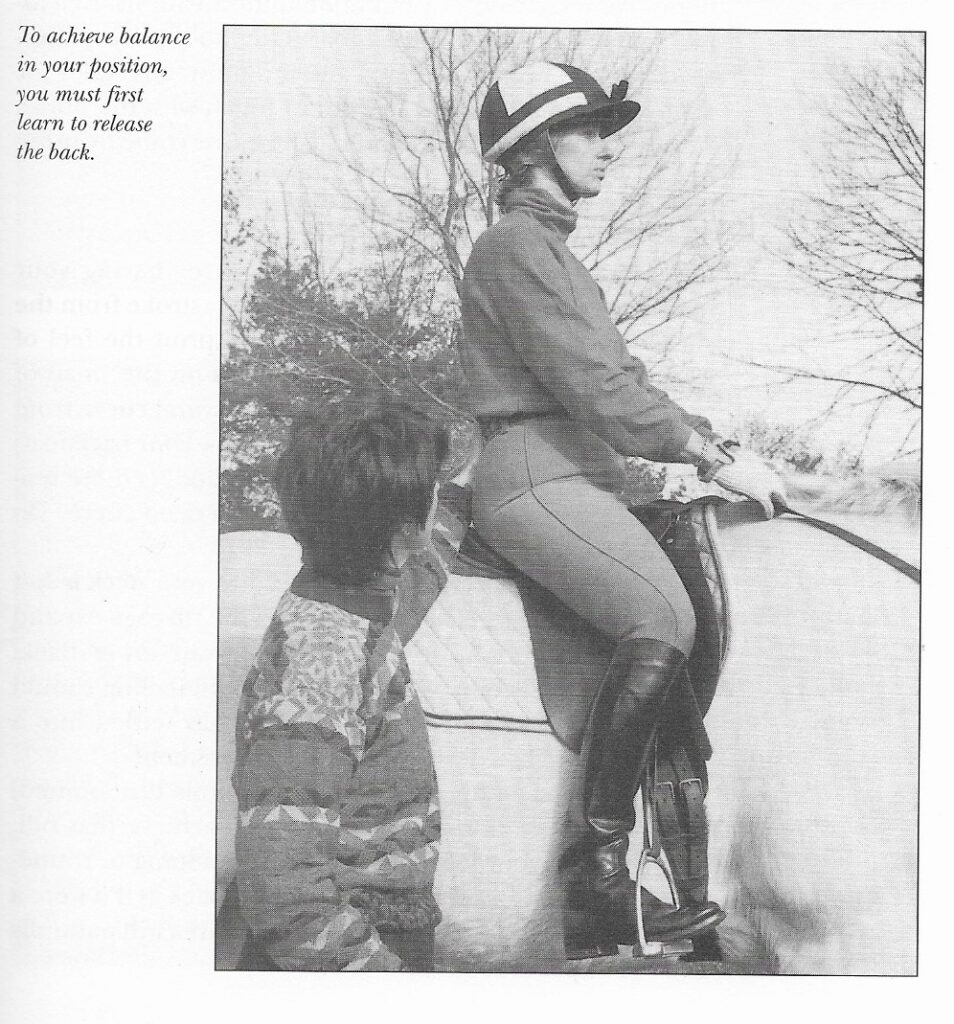
In this photo from my book, Peggy Cummings provides support and places her hand on the small of the rider’s back to get her to feel and be familiar with expanding the lower back and not allowing it to hollow. The rider must learn to release her lower back for it to become full and the leg to fall into the correct position. You must always start with a release once in the saddle. Take a deep breath and imagine the air flowing out from your lower back toward the tail of the horse.
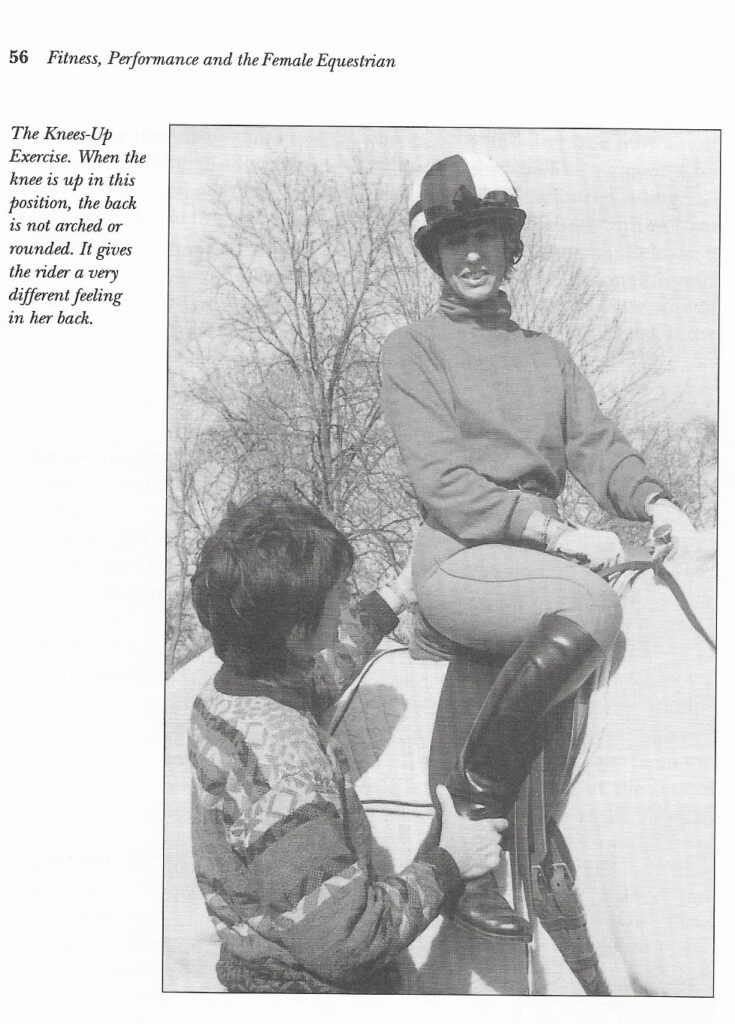
The next step is to have someone hold your horse while you bring your legs up. Now notice your lower back how full it is. This entire part of your body feels wide and anchored. Now lift yourself up with one hand on the pommel and one on the cantle and adjust your pelvis a tiny bit under you as you sit back down, still with your legs up. How does that feel to you? It may feel different, strange? The female pelvis has about a quarter of inch space where the ischial tuberosities (seat bones) are balanced. (The rider is most safe in this position by holding the pommel with one hand and the reins and mane in the other.)
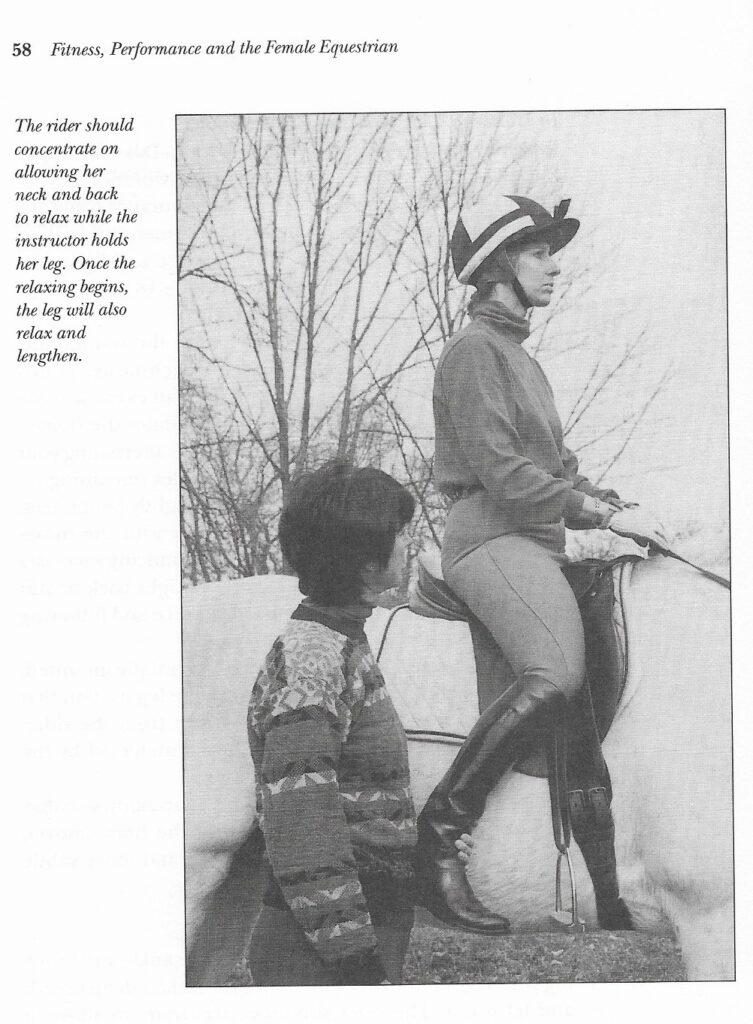
Next slowly drop the leg down and notice how your seat may have changed. The instructor will hold the leg and ask you to relax and release again until the leg sinks down into the instructor’s hand.
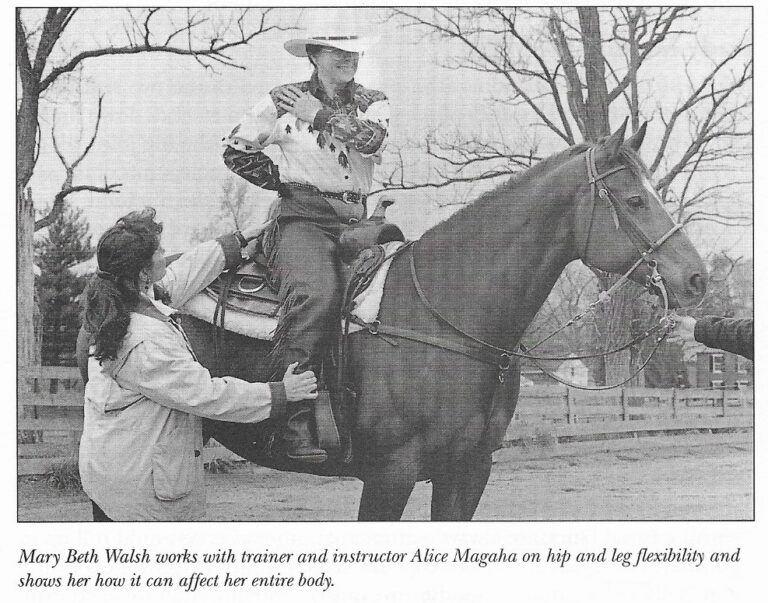
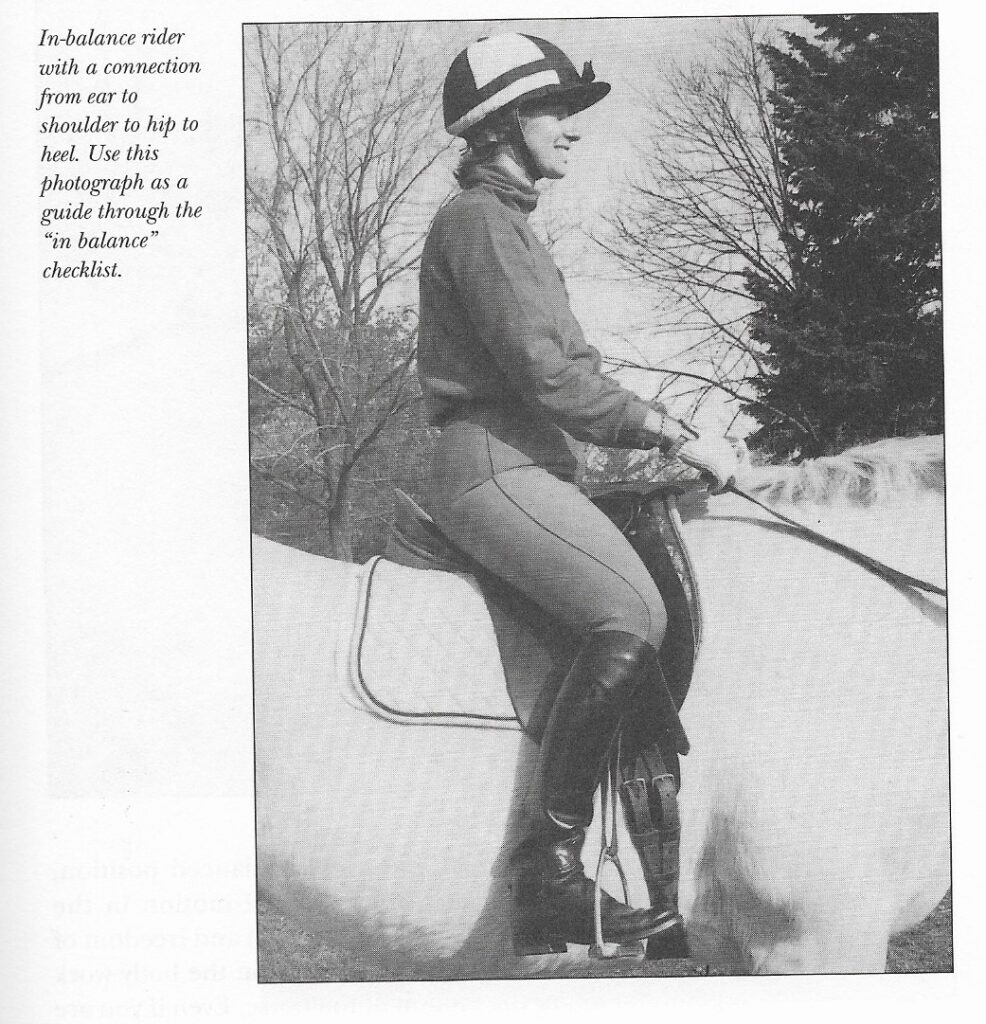
Now the rider is in a balanced position. Whether English or Western riding, finding your balance in the saddle is the same process. Once the horse takes a step you will be re-balancing with each stride as the force of the horse will be pushing you behind the motion or alignment of 12:00. Practice this at all of the gaits and see what you discover. You can stop and bring your legs up and adjust at any time you feel safe to do so. This work is especially profound during lunge line sessions when the rider can work on her aligned position in motion.
You can find this and much more information, exercises, and methods to help you establish a balanced position for your riding whether it be English, Western or some other type.
Please don’t hesitate to reach out to me with questions, concerns or to set up an appointment online or in person in the UK!!!
UK 07445751866
marymidkiff@gmail.com
Sources include my websites womenandhorses.com
marymidkiff4horses.com
or Fitness, Performance and the Female Equestrian book.
Have fun and be patient with your body awareness! Happy Holidays!
